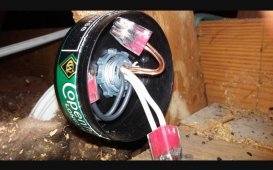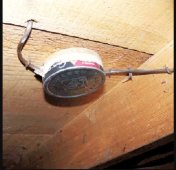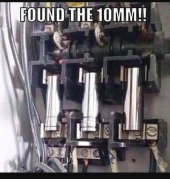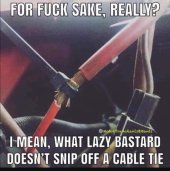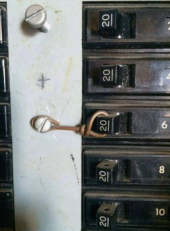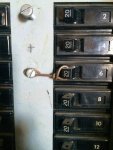42OhmsPA
What's in a title?
Scotch tape is optional if using a plastic lid, just twist your wires together and pop the lid on. If your concerned about rodents use a metal lid with without tape.
Edit - see attachments.
Also duct tape makes a great cover for missing knockouts in a panel.
Put an old metal antenna across your main lugs to change the frequency, works on AC or DC.
Make sure you smash the end of the ground rod with a hammer a few times so the inspector can't tell you cut it off after you hit that boulder a few inches below grade.
Grounding your lightning suppression to your NG line can serve as a great leak detector.
Wire a lamp cord to a single pole switch, plug in off and switch on.. . Breaker finder made easy.
Edit - see attachments.
Also duct tape makes a great cover for missing knockouts in a panel.
Put an old metal antenna across your main lugs to change the frequency, works on AC or DC.
Make sure you smash the end of the ground rod with a hammer a few times so the inspector can't tell you cut it off after you hit that boulder a few inches below grade.
Grounding your lightning suppression to your NG line can serve as a great leak detector.
Wire a lamp cord to a single pole switch, plug in off and switch on.. . Breaker finder made easy.



